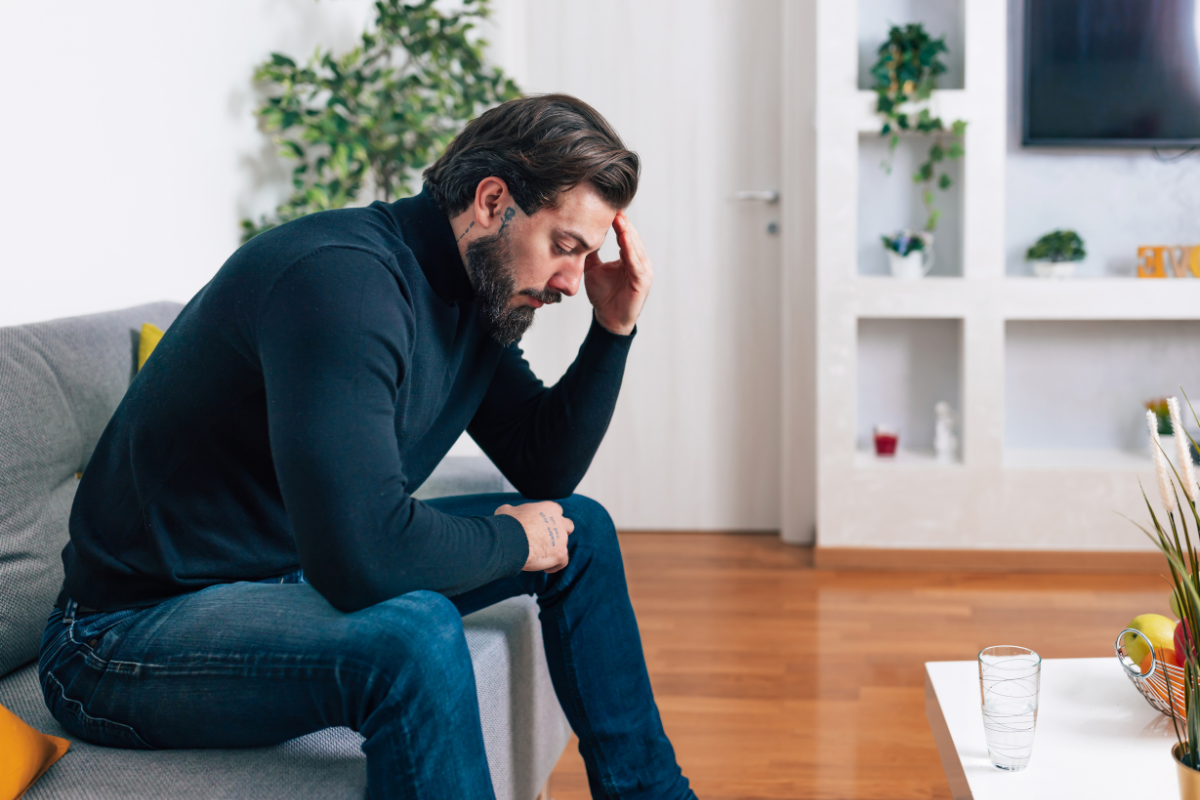
Bone health perhaps isn’t something we immediately associate with hormones. However, the process of bone formation and maintenance is intricately linked with hormonal actions.
In this article, we explain what osteoporosis is, the role that our hormones play in maintaining bone health and how hormonal therapy, exercise and diet can help to keep bones strong.
What is osteoporosis?
Osteoporosis is a condition where bones become weak, fragile and more susceptible to fractures. Osteoporosis literally means ‘porous bone’. When viewed under a microscope, healthy bone looks like honeycomb. However, when osteoporosis occurs, the holes and spaces in the honeycomb structure become much larger making the bones brittle.
Throughout our lives, our bones are continuously remodelled by cells called osteoclasts and osteoblasts. Osteoclasts breakdown old bone and osteoblasts form new bone. The large holes found in osteoporosis appear when the rate of bone breakdown is greater than the rate of bone formation.
Losing bone mineral density (BMD) is a natural part of ageing, however, rapid loss of bone can lead to osteoporosis. In the UK alone, 3 million people are estimated to have osteoporosis and it affects both women and men. It is more common among women; 1 in 2 women over the age of 50 experience a fracture as a result of osteoporosis, compared with 1 in 5 men.
What role do hormones play in maintaining bone mineral density?
BMD is controlled by the actions of osteoclast and osteoblast cells. These cells are in turn regulated by hormones, in particular, estrogen and testosterone.
Women: Decline in estrogen
In women, estrogen plays a key role in maintaining BMD. Estrogen inhibits the activity of osteoclasts, the cells that breakdown bone. However, during menopause the levels of estrogen decline and as a result the activity of osteoclasts increases. This means that the rate of bone breakdown is greater than the rate of bone formation.
Women are at a greater risk of developing osteoporosis if they experience early menopause, before age 45, or if they have had a hysterectomy. Approximately 30% of all post-menopausal women in Europe and the US are reported to have osteoporosis.
During the menopausal transition, women typically lose around 10% of their BMD and for some women, this can be as high as 20%.It is important to note that not all women will develop osteoporosis following menopause. Whilst declining estrogen levels play a role in BMD reduction, bone density before menopause and genetic factors also contribute to the risk of developing osteoporosis.
Men: Decline in testosterone
Testosterone directly regulates bone growth and maintenance by stimulating the activity of osteoblasts, the cells that form new bone. Testosterone also has indirect actions on bone; it is converted to estrogen, which has a protective effect on bone by inhibiting osteoclast cells.
Many studies have demonstrated that low testosterone levels are associated with lower BMD and osteoporosis in men.
As men age, it is common to find that their testosterone levels decline. This is known as andropause, which is commonly referred to as the ‘male menopause’. The decline in testosterone associated with andropause is different to the hormonal changes during menopause as the change is gradual rather than rapid, and not all men experience it.
How does hormone therapy help maintain healthy bones?
Since estrogen and testosterone play pivotal roles in the maintenance of BMD, and their age-related decline is associated with the development of osteoporosis, it is perhaps of little surprise that hormone replacement therapy can help to keep bones healthy.
Below are examples of studies which demonstrate the efficacy of hormone replacement therapy for maintaining BMD and preventing osteoporosis in women and men.
Transdermal Estradiol
A study conducted in the US studied the changes in BMD of the spine and hips in post-menopausal women receiving low-dose transdermal estradiol, compared to women who received a placebo. After 2 years the researchers found that:
• BMD of the spine increased by 2.6% in women receiving transdermal estradiol, compared to an increase of only 0.6% in the placebo group.
• BMD of the hips increased by 0.4% in women receiving transdermal estradiol, and decreased by 0.8% in the placebo group.
Testosterone
Testosterone replacement therapy is effective for relieving many symptoms associated with andropause. In recent years, several small clinical trials have investigated the benefits of testosterone specifically for men’s bone health.
In one study, published in 2017, researchers found that testosterone gel had a positive impact on BMD when used by older men with low testosterone levels for 1 year.
• Over the 12 months, BMD of the spine increased by 7.5% in men receiving testosterone treatment compared with an increase of 0.8% in the placebo group.
• Bone strength, which was calculated based on analysis of bone scans, increased by 10.8% in men receiving testosterone and by 2.4% in men receiving the placebo gel.
What else helps with bone density?
Lifestyle factors, including exercise and diet, play a key role in preventing osteoporosis.
Exercise
It’s never too late to start exercising to improve your bone strength. Exercise can increase bone density before menopause or andropause and slow down the rate of bone loss during and after, thus preventing osteoporosis. Weight bearing exercises have been shown to be effective for maintaining bone density. These exercises include anything that you do on your feet. They can be low impact, for example brisk walking, climbing stairs or using an elliptical machine, or high impact, for example, running, dancing and jumping. One study found that pre-menopausal women who jumped 10-20 times per day had significantly improved hip BMD after just 16 weeks.
Muscle strengthening exercises are also recommended to improve your bone strength; this might include lifting weights or using elastic resistance bands. As you perform these exercises and become stronger, you can gradually increase the weight or resistance used. Finally, doing yoga, Pilates or Tai Chi can help you to improve your posture and balance, thus reducing the risk of falling and damaging your bones.
A combination of these exercises is best for strengthening your bones and these can easily be built into your recommended 30 minutes of exercise per day, which is beneficial for your overall health and well-being.
Diet
To find out more about the nutrients required for healthy bones, we spoke with our naturopath, Vera Martins.
What nutrients are most important for maintaining strong bones?
The most important nutrients for healthy bones are calcium, vitamin D, vitamin K ,Vitamin C and magnesium.
Other nutrients, including zinc, copper, manganese and boron are also important for helping to maintain bones and connective tissue, the framework that connects our bones.
What do these nutrients do?
• Calcium is the building block for bones, and it helps to maintain bone health.
• Vitamin D supports effective calcium absorption from the intestines and has an important role in bone breakdown and formation.
• Vitamin K works with vitamin D to ensure that calcium is not only absorbed but deposited in the bones.
• Vitamin C is required for the synthesis of collagen which is part of the connective tissue.
• Magnesium is important for converting vitamin D into its active form and it helps to preserve bone structure by supporting calcium deposits in the bones.
What foods do you recommend to boost intake of these nutrients?
Calcium rich foods include dairy products (particularly kefir, which has the added advantage of being a probiotic), green vegetables such as broccoli, kale, collard greens, sardines with bone, shrimps and soybeans.
Foods rich in vitamin K1 include cooked green leafy vegetables such as kale, spinach, collard greens, Swiss chard, parsley, broccoli and Brussels sprouts.
Vitamin K2 is the type of Vitamin K that has a more significant role in bone health. Good sources of vitamin K2 include beef liver, chicken meat, cheese and natto (fermented soybeans).
Vitamin D can be gained from oily fish, egg yolks and whole milk, however, the sun is our main source of vitamin D as the body makes vitamin D from direct sunlight.
Are supplements required for healthy bones?
Dietary supplements can help prevent osteoporosis in people who are at risk, particularly in peri-menopausal women or young women with amenorrhea. They are often recommended to people already diagnosed with osteoporosis. Supplements can help to correct nutrient deficiencies, which are more likely to occur as we age, since we produce less stomach acid which results in poor nutrient absorption. When buying minerals/vitamins supplements, it is recommended that you choose chelated or food-grown forms as these tend to be better absorbed.
Vitamin D often needs to be taken as a supplement, as lack of sun exposure can lead to deficiency. Vitamin D3 is the preferred form. Calcium supplements are best taken twice a day as it is better absorbed when taken in smaller doses. Calcium should be taken together with magnesium, as magnesium helps to draw calcium out of the blood and soft tissues and back into the bones.




